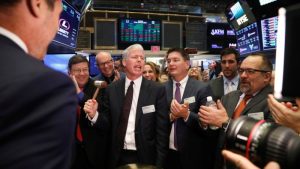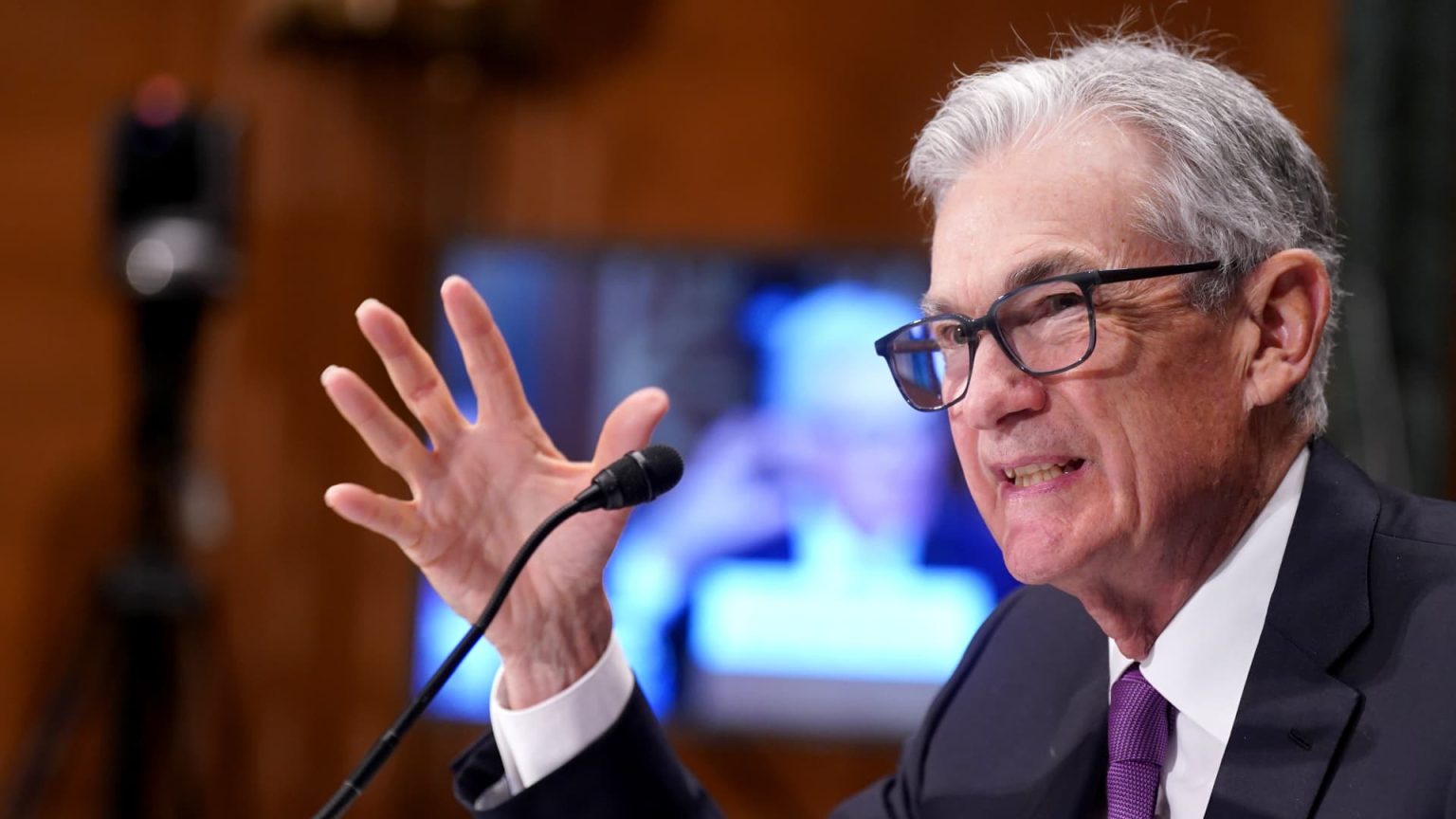The Federal Reserve has grabbed a lot of attention the past couple of years and for good reason: Investors are pinning their hopes on the central bank’s monetary policy to beat down inflation and softly land the red-hot U.S. economy. But another part of the economic equation — fiscal policy directed by the White House and Congress — is about to nab some of that spotlight as the fall presidential election approaches. How the two forces work together will determine where the economy and markets go next. First, let’s define these two wonky terms. Fiscal policy refers to how the government generates revenue and targets its spending to achieve a desired outcome. In contrast, monetary policy refers to actions taken by a country’s authority on money — the Federal Reserve in the U.S. — to reach a desired economic outcome. In the U.S., this means a stable economy with low unemployment and price stability — those are the pillars of the Fed’s dual mandate. Fiscal policy and monetary policy are implemented independently, even as one impacts the other. Each can be one of three things: neutral, contractionary, or expansionary. A neutral policy seeks to maintain the status quo. A contractionary policy seeks to slow the economy, usually because inflation is running too hot. This is achieved with policies that pull money out of circulation, thus reducing buying power and therefore demand. The U.S. is a consumption-based economy, so it can be stimulated or slowed down by making it harder or easier for consumers to buy stuff. An expansionary policy looks to stimulate the economy, either to reduce unemployment or generate more growth. Here, the goal is to increase the amount of money in circulation in hopes of stimulating the demand for goods and services. The overarching goal is simple, even if the actions aren’t: Create conditions that keep the economy healthy. That means moderate growth with stable prices and a job available to anyone willing to work. This environment allows businesses and private citizens to make better decisions about saving, spending, and investing because stability leads to predictability. Two levers for lawmakers There are two main levers for the government to pull — taxes and spending — to achieve its desired outcomes. Let’s say the U.S. government wants to stimulate economic activity. That means lawmakers will look to put an expansionary policy in place, with more money flowing through the system to spend. Washington can either reduce taxes, thus leaving more money in the pockets of consumers and businesses that will hopefully find its way into the economy via the purchase of goods and services. It can also increase spending, which pumps money into the system. It can also do both things. To achieve the first option, the government can directly lower rates to leave citizens with more disposable income. Another, more indirect option is to authorize tax credits which can serve to both reduce tax payments while also influencing a specific kind of spending. For example, adding a tax credit on purchases of an electric vehicle or solar panels to urge folks away from fossil fuels. Spending can take many forms. A few examples: transfer payments (health benefits, welfare, social security, stimulus checks), spending on goods and services (student loan repayment, defense spending), infrastructure projects (the CHIPs Act to prompt more spending on semiconductor manufacturing in the U.S.) A contractionary policy takes the opposite approach. To slow the economy, the government wants to reduce the money in the system, which can be done by increasing taxes — thus reducing the amount of money folks have to spend on goods and services. Again, this can be done as a direct action, such as an increase in income tax rates, or more indirect means, such as the implementation of “sin taxes” which serve to decrease spending on unhealthy habits. Think of the heavy taxes on cigarettes in the U.S. The government can also simply pull back on spending. A reduction in tax credits, for example, will negatively impact demand for certain goods or services. How impactful any of these policies will be depends on both the magnitude of the changes and the combination of those policies. For example, the government may look to increase taxes and spending to achieve a more neutral policy or in an attempt to shape the economy and change the distribution of wealth. Or it may look to reduce taxes on certain payers while also increasing spending in specific areas. All of this takes place in the political sphere. The economy isn’t always the top or only concern being tackled, which is a key reason why we must be critical of fiscal policy analysis — even more so than we are with monetary policy. After all, an administration intent on cutting spending and raising taxes may well be doing what’s best for the economy by working toward a balanced budget. But it’s also sure to leave some voters thinking it’s time for a change. After all, the individual voter may be thinking more about her wallet than the government’s need to balance the budget. The Fed’s three tools While the Fed has many tools at its disposal, the three primary ways of impacting the supply of money in the economy are the overnight interest rate (also referred to as the federal funds rate), buying and selling securities in the open market (open market activity), and adjusting the “reserve requirement” placed on banks. Let’s start with interest rates. The Fed can only directly impact the overnight rate, which is the rate it charges to lend money to commercial banks and also the rate banks use to lend each other money in the overnight market. When CNBC and other financial media outlets talk about raising, cutting, or holding rates steady, they generally mean the fed funds rate. Raising this rate reduces the demand to borrow, which in turn reduces the demand for goods or services that generally require borrowing money. Consider: If a bank needs to spend more to borrow, it will in turn charge its customers more for the money they borrow. After all, one of the main sources of bank revenues is the spread it achieves between what it pays to borrow money and the rate it charges to lend out money. This makes raising the overnight rate a contractionary policy. Alternatively, lowering rates makes it cheaper for banks to borrow, resulting in lower costs to those that in turn borrow from the banks. This leads to an increase in the affordability of goods or services purchased with borrowed money. The Fed may also seek to more directly impact the amount of money in the system via open market activities. Historically, this has been done through the sale and purchase of government bonds. To pump money into the system, the Fed can go out and buy government bonds. That means government debt increases, but the government then has cash on hand that it can use for spending initiatives discussed above to jumpstart the economy. If the Fed wants to pull money out of the system it can either sell those bonds, thus taking back the cash it used to purchase them, plus interest, or simply let the bonds mature and not buy new ones to replace those that have “rolled off” the balance sheet. This open market activity also has an indirect impact on longer-term rates. Remember, rates move in the opposite direction of bond prices. The Fed has near-unlimited buying power and as a result, operates as a massive source of demand in the Treasury market. If the bank steps into the market in a big way — as we saw during the Great Financial Crisis and again during the Covid pandemic — it can drive up prices and therefore drive down longer-term interest rates. This option is not as direct as simply changing the overnight rate, but it does impact the longer end of the yield curve, which is more important when it comes to longer-term financing, such as mortgages for homebuyers. More buying serves to pressure rates lower, thereby making mortgages more affordable and stimulating the demand for homes. Less buying from the Fed removes a large chunk of demand, which can contribute to lower bond prices, higher yields, and therefore a less affordable mortgage market. Option No. 3 for the Fed: Adjust the reserve requirement it places on banks, which must maintain a minimum amount of capital based on a calculation of risk-weighted assets. The higher the reserve requirement, the less money available to move around the economy. For example, a bank may have $100 billion on hand to lend, but if it is required to maintain a 10% reserve, it can only loan about $90 billion. The Fed can reduce the money in the system (contractionary) by raising the requirement or increase the money supply (expansionary) by reducing it. How the two work together So far, we’ve discussed how the fiscal and monetary authorities can separately influence economic activity. But how do the different actions interact and influence each other? Being that there are two entities, each with two (expansionary policy, contractionary policy) there are four policy combinations, excluding the potential for one or both to simply take a neutral stance. 1. Both the fiscal and monetary policies are expansionary. Money is coming into the economy via many different routes. An extreme example is what we saw in 2020 during the pandemic when the Fed dropped the overnight rate to zero and immediately started buying up securities in the open market. The central bank even went so far as to buy securities deemed riskier than Treasuries such as corporate bonds. At the same time, the U.S. government started sending out stimulus checks to keep folks going as many businesses shut down. With nowhere to spend the excess cash, much of this flood of money went into stocks. 2. Both the fiscal and monetary policies are contractionary. The authorities pump the breaks. An extreme example would be the Fed raising rates while selling securities into the open market, resulting in higher yields at every maturity. Meanwhile, lawmakers raise taxes and cut back on spending and subsidies. As you can imagine, there wouldn’t be much appetite to spend on discretionary goods in such an environment. 3. Expansionary fiscal policy combined with contractionary monetary policy. It gets more complicated when the two are working in different directions. Consider a situation in which the Fed is tightening its monetary policy (raising rates, or selling bonds, or both) while Washington lowers taxes, thus increasing after-tax income. On the one hand, rates are increasing, making purchases made on credit (like homes and automobiles) more expensive due to the higher interest rates. However, offsetting this is the increased after-tax income buyers have as a result of lower taxes, or maybe a tax credit for certain vehicles or government incentives for first-time home buyers. The outcome isn’t so clear-cut and is likely to affect people differently based on their financial situations and what they’re looking to buy. The impact on corporations (and therefore stocks) is also not entirely clear. Corporations may have to pay higher interest charges on debt. However, their customers may be willing to spend more thanks to tax cuts or government subsidies. The magnitude of the policies in question along with how reliant the company is on debt is what will determine the net effect on the business. 4. Contractionary fiscal policy combined with expansionary monetary policy. Now consider a situation in which the Fed is easing its monetary policy while Washington raises taxes, thus reducing after-tax income. It’s cheaper to borrow because the Fed is working to lower rates, meaning purchases made on credit should be more affordable. However, that’s going to be offset by the reduced after-tax income. The same goes for corporations: they may have an easier time with debt financing due to the lower rate environment or be able to offer buyers more favorable financing rates at the time of purchase. But at the same time, those buyers may not be coming to the table with as much spending power due to the increased taxes, thus offsetting the positive incentives being offered by the seller. What does it all mean for stocks? Everything comes down to supply and demand. As we consider the policies implemented by the fiscal and monetary authorities, ask what each is trying to do in terms of supply and demand on multiple fronts. What does it mean for consumer demand for goods and services? What does it mean for hiring? How does it impact demand for capital and financing costs? Will demand vanish or will it shift? Are we seeing subsidies and/or sin taxes implemented to alter consumer behavior? And so on. By answering these kinds of questions we start to see how the policies might impact corporate sales and earnings, as well as valuation multiples and/or discount rates. As an example, let’s consider iPhone demand based on these policies. If taxes go up (fiscal tightening), it stands to reason that less after-tax money in consumer pockets will pressure sales. But what if at the same time, the Fed maintains an expansionary policy that sees rates move lower? In that scenario, we might be able to offset some or all of the higher tax burden because it may get cheaper to finance the purchase of an iPhone. We might also see the wireless providers come in with subsidies to lock buyers into contracts and make the new iPhone more affordable. So what happens to Apple ‘s sales and earnings, and the valuation investors will put on the business, will depend on how all of these factors ultimately net out. A company with a heavy net cash position for example may benefit from higher rates because it will generate more interest on that cash. Companies that rely on debt financing may get hurt since the cost of financing rises in a high-rate environment. These policies, however well considered, also don’t always play out as planned. For example, the government could cut taxes to 0%, but that wouldn’t help the economy if consumers simply took that money and saved it, rather than spent it. Two-thirds of the U.S. economy relies on consumption, not savings. So if the tax cut doesn’t lead to increased consumption, it won’t have the desired effect. Look back at what happened to the banking industry in 2022. Higher rates are supposed to be good for banks because they can charge more money on loans and increase their net interest margins. However, we did see that rates can go too high. While we did see net margin expansion, the benefit of this started to be offset by depositors withdrawing funds to reinvest them in higher-yielding cash alternatives. Higher rates were better until they weren’t. In other words, there are textbook outcome for each of these actions and their combinations, but fiscal and monetary policy in the real world can get very creative — and trickier to figure out the full impact until you’re looking backward. (See here for a full list of the stocks in Jim Cramer’s Charitable Trust.) As a subscriber to the CNBC Investing Club with Jim Cramer, you will receive a trade alert before Jim makes a trade. Jim waits 45 minutes after sending a trade alert before buying or selling a stock in his charitable trust’s portfolio. If Jim has talked about a stock on CNBC TV, he waits 72 hours after issuing the trade alert before executing the trade. THE ABOVE INVESTING CLUB INFORMATION IS SUBJECT TO OUR TERMS AND CONDITIONS AND PRIVACY POLICY , TOGETHER WITH OUR DISCLAIMER . NO FIDUCIARY OBLIGATION OR DUTY EXISTS, OR IS CREATED, BY VIRTUE OF YOUR RECEIPT OF ANY INFORMATION PROVIDED IN CONNECTION WITH THE INVESTING CLUB. NO SPECIFIC OUTCOME OR PROFIT IS GUARANTEED.
Read the full article here









